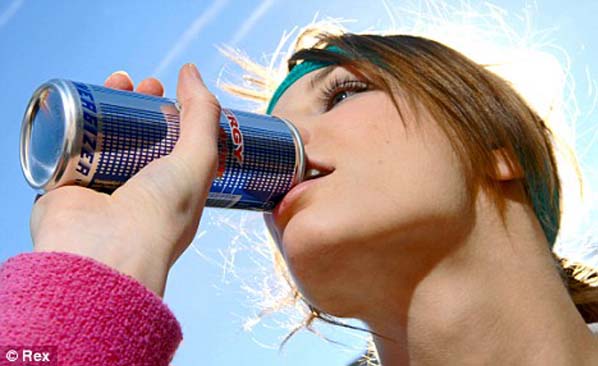
Life Desk :
Most of the young people drink energy drinks (EDs) with alcohol to decrease alcohol’s sedative effects and stay awake longer, enabling them to drink more alcohol. Adding to the growing body of research linking ED consumption with risk-taking and alcohol-related problems, this study examined its relationship with drunk driving.
Importantly, the researchers differentiated between the different ways in which EDs are consumed: exclusively with alcohol, exclusively without alcohol, or both with and without alcohol depending on the occasion.
‘High consumption of energy drinks was associated with heavier alcohol drinking, resulting in more frequent drunk driving. ‘
Researchers looked at data from a longitudinal study of college students assessed annually via personal interviews. In year six, 1,000 participants (550 females, 450 males) self-reported their past-year frequency of drunk driving, ED consumption patterns, alcohol use, and other caffeine consumption.
The researchers’ statistical model accounted for several background risk factors for drunk driving in order to isolate whether ED consumption might explain any unique variance in drunk driving behavior.
Results indicated that ED consumption was present in 57 percent of students: 9 percent drank EDs exclusively with alcohol, 16 percent drank EDs exclusively without alcohol, and 32 percent drank EDs both with and without alcohol depending on the occasion.
More frequent ED consumption was associated with more frequent drunk driving through two distinct pathways.
First, echoing prior research, consuming EDs with alcohol was associated with heavier alcohol drinking and, thereby, with more frequent drunk driving.
A second separate path was unexpected-namely, consuming EDs without alcohol contributed additional risk for drunk driving, regardless of alcohol drinking patterns. The second path suggests that mechanisms other than the promotion of heavy drinking by EDs are involved in promoting drunk driving.
The authors encourage parents, clinicians, and college administrators to regard any style of ED consumption, whether with or without alcohol, as a warning sign that students might be at high risk for alcohol-related consequences such as drunk driving. The authors also reiterate earlier calls to caution students against consuming EDs with alcohol.
Source: Newswise
Most of the young people drink energy drinks (EDs) with alcohol to decrease alcohol’s sedative effects and stay awake longer, enabling them to drink more alcohol. Adding to the growing body of research linking ED consumption with risk-taking and alcohol-related problems, this study examined its relationship with drunk driving.
Importantly, the researchers differentiated between the different ways in which EDs are consumed: exclusively with alcohol, exclusively without alcohol, or both with and without alcohol depending on the occasion.
‘High consumption of energy drinks was associated with heavier alcohol drinking, resulting in more frequent drunk driving. ‘
Researchers looked at data from a longitudinal study of college students assessed annually via personal interviews. In year six, 1,000 participants (550 females, 450 males) self-reported their past-year frequency of drunk driving, ED consumption patterns, alcohol use, and other caffeine consumption.
The researchers’ statistical model accounted for several background risk factors for drunk driving in order to isolate whether ED consumption might explain any unique variance in drunk driving behavior.
Results indicated that ED consumption was present in 57 percent of students: 9 percent drank EDs exclusively with alcohol, 16 percent drank EDs exclusively without alcohol, and 32 percent drank EDs both with and without alcohol depending on the occasion.
More frequent ED consumption was associated with more frequent drunk driving through two distinct pathways.
First, echoing prior research, consuming EDs with alcohol was associated with heavier alcohol drinking and, thereby, with more frequent drunk driving.
A second separate path was unexpected-namely, consuming EDs without alcohol contributed additional risk for drunk driving, regardless of alcohol drinking patterns. The second path suggests that mechanisms other than the promotion of heavy drinking by EDs are involved in promoting drunk driving.
The authors encourage parents, clinicians, and college administrators to regard any style of ED consumption, whether with or without alcohol, as a warning sign that students might be at high risk for alcohol-related consequences such as drunk driving. The authors also reiterate earlier calls to caution students against consuming EDs with alcohol.
Source: Newswise

